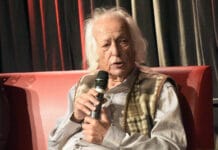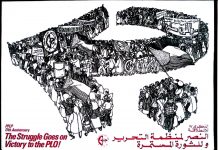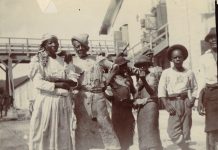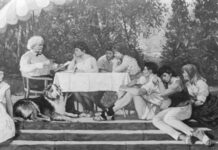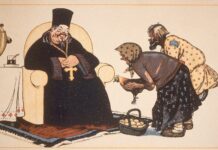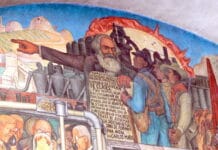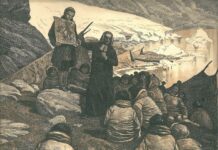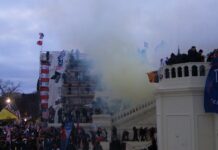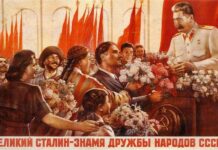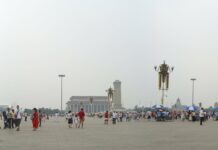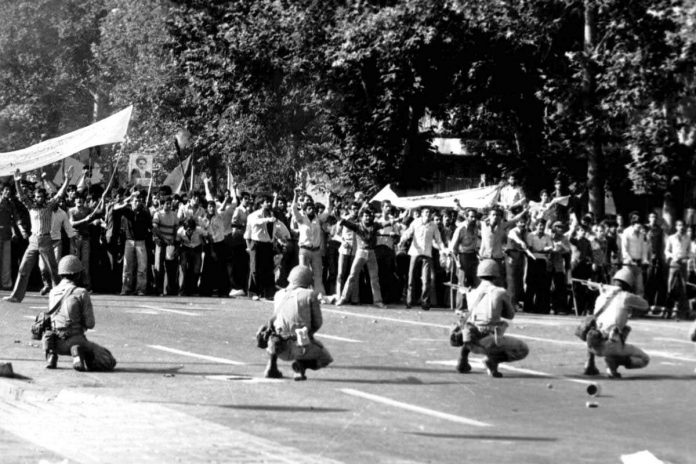
Linkbox om den iranske revolution og kontrarevolution 1978-1979 – og derefter.
Efter massedemonstrationer gennem 1978 mod shah Mohammad Reza Pahlavis diktatur, vender ayatollah Khomeini 1. februar 1979 tilbage fra eksil til Teheran. 11. februar sendes shahen i eksil og 1. april oprettes den islamiske republik.
Bjarne A. Frandsen.
Januar 2009. Revideret november 2019.
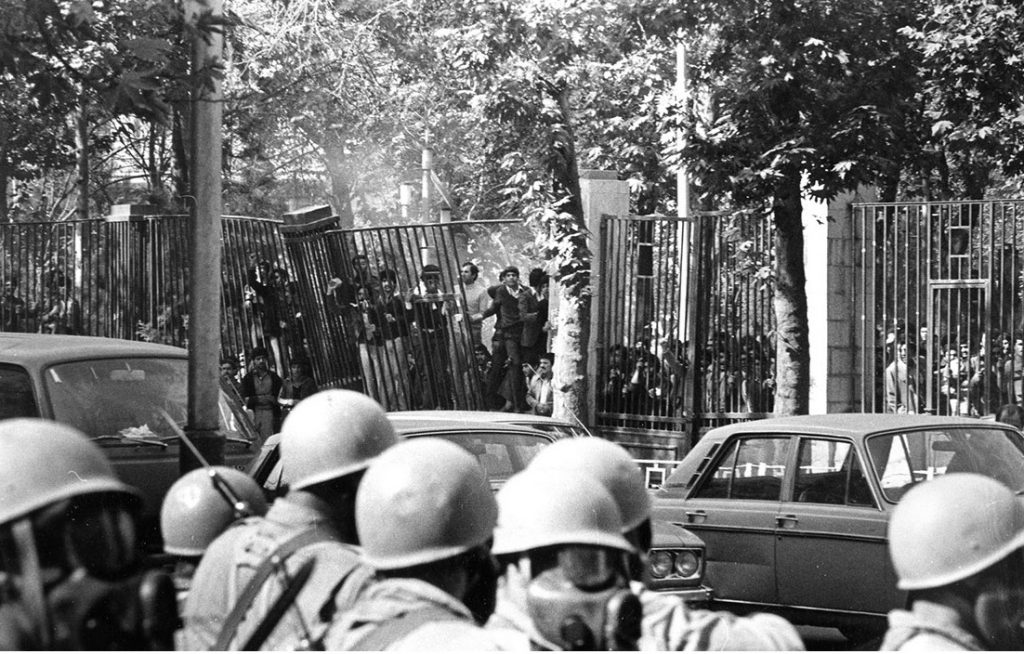
Se også på Socialistisk Bibliotek:
- Linkboxen Oprøret i Iran 2009
- Tidslinjen 28. december 2017, om de iranske protester mod prisstigninger og korruption.
På dansk (og norsk/svensk)
- Iran (Leksikon.org). Scroll ned til afsnit “1979 Exit Shah”.
- Den iranske revolution (Wikipedia.dk).
Den iranske revolution 1979
Af Maryam Poya (Internationale Socialisters Forlag, 1989, 49 sider; online på Marxisme.dk)
“Den iranske arbejderklasse udgjorde hovedkraften i kampen for at bringe shahens rædselsregime til fald. Men magten faldt ikke i arbejdernes hænder … Til syvende og sidst blev arbejderne underlagt et nyt islamisk regime, under hvilket deres rettigheder og styrkepositioner ikke var større – og på nogle meget væsentlige områder endda mindre – end dem, de havde haft under Shahen.”
Autonom Infoservice
Iran 1979: “Næsten alle længtes efter Shahens fald” (19. februar 2019)
“Interview med Roya Hakakian, iransk forfatter og filminstruktør i eksil. ”I dag ligner det iranske regime snarere en økonomisk mafia og jeg er fuld af forhåbning til, at den iranske befolkning lettere kommer af med en korrupt mafia end med et ekstremt ideologisk regime …”
Eftertryk
40-året for den Den Utænkelige Alliance. Af Emil Vatani (27. februar 2019)
“Nyligt frigivet kildemateriale giver os et detaljeret indblik i, hvordan Ayatollah Khomeini og USA samarbejdede i dagene op til Khomeinis magtovertagelse.”
Kontur
Irans revolution 1977-79 – interaktion og transformation (pdf). Af Peter Seeberg (nr.18, 2008)
“Det er artiklens synspunkt, at revolutionen må opfattes som en kompleks og dynamisk proces, som rummede en stor grad af egendynamik og uforudsigelighed, netop derved muliggjorde radikale brud og nykonstruktioner og fik uforudsete følger.”
Marxistarkiv.se
Om Iran ur tidskriften Fjärde Internationalen (pdf)
“Nedan redovisas de texter om Iran som publicerade i tidskriften Fjärde Internationalen under åren 1979-1983 och handlar om störtandet av shahen om tiden närmast därefter.”
Revolution
Den iranske revolution, del 1-2 (1979). Af Ted Grant (februar 2009)
“Artikel om den iranske revolution, som Ted Grant skrev i februar 1979, netop som Khomeini var vendt tilbage fra sit eksil i Paris.”
A video broadcast from the 1979 in Tehran by a CBC reporter talking about the current situation at that time.
Socialistisk Arbejderavis
Revolutionen i Iran 1979: 30 år efter. Af Jørgen Lund (nr.286, 12. februar 2009)
“Det vigtigste ved det moderne Irans historie er en historie om hurtige ændringer. Og ikke mindst erfaringerne fra den iranske revolution i 1979, historien op til den og om kontrarevolutionen bagefter.”
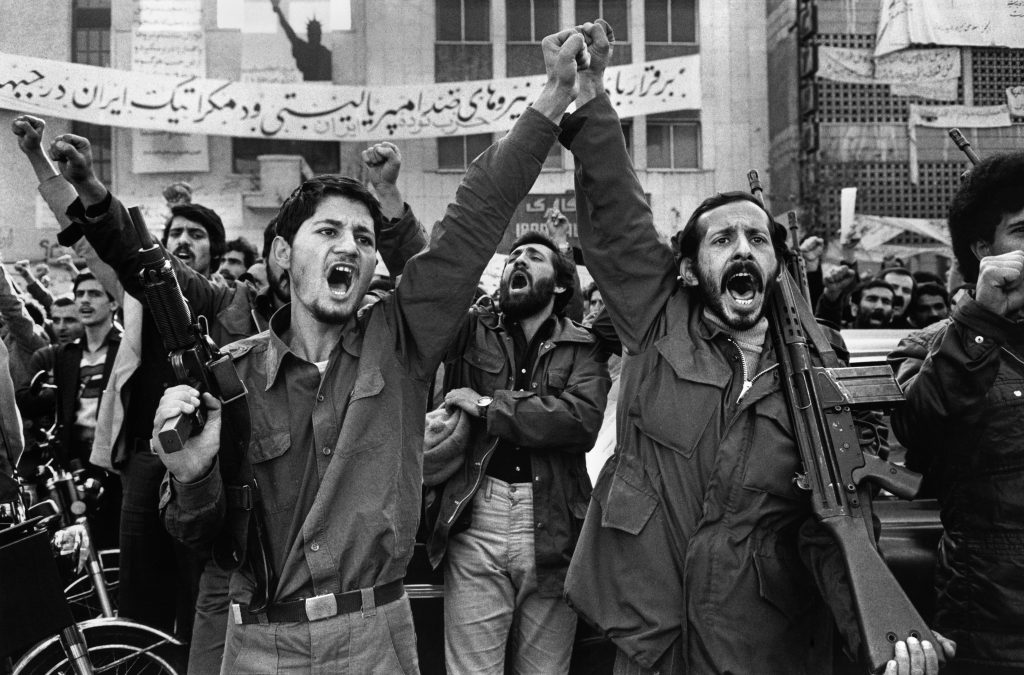
In English
- Iranian Revolution (Wikipedia.org)
Critique
On the 30th anniversary of the Iranian Revolution. By Torab Saleth (2009; online at Internet Archive WayBackMachine)
“The story of the Iranian Islamic Revolution is first and foremost the story of how a counter-revolution succeeded in hijacking a genuine popular revolution by being placed at its leadership.”
Class nature of the Iranian regime (pdf). By Torab Saleth (Issue 43, December 2007; online at Internet Archive WayBackMachine)
“Let us also not forget, given the degree of participation by the masses, the Iranian Revolution of 1977-79 was one of the most important revolutions of the 20th century.”
Fifth International
The tragedy of the Iranian Revolution: Lessons for today. By Jens-Hugo Nyberg (Vol.3, Issue 2, Spring 2009)
“… the appalling betrayal of the mass struggle by the Stalinist leadership led to the formation of Iran’s reactionary theocratic state.”
In Defence of Marxism
Thirty years since the Iranian revolution. By Fred Weston (11 February 2009)
“The media has been highlighting it as an ‘Islamic revolution’, when in actual fact what we witnessed thirty years ago was a genuine workers’ revolution that was hijacked by the reactionary Ayatollahs.”
The Iranian Revolution: Past, present and future. By Dr. Zayar (2000)
“This book represents an important contribution to our understanding of the Iranian revolution … Dr. Zayar, quoting a wealth of original sources, proves beyond a shadow of doubt that the movement of 1979 was a proletarian revolution which was betrayed by the leadership, leading to a counter-revolution in which the reactionary mullahs seized power by stepping into a power vacuum.”
Revolution and counter-revolution in Iran: A Marxist view. By Saber Nikbeen (1983)
“This article written in 1983 by Iranian Marxists who had actively participated in the revolution gives an excellent analysis of the whole process.”
The Iranian revolution. By Ted Grant (1979)
“This 1979 article by Ted Grant explains how the hated regime of the Shah was overthrown by a workers’ revolution, and how, unfortunately, the revolution was hijacked by the fundamentalist mullahs.”
Insurgent Notes
Anti-imperialism and the Iranian revolution: Fetters of the past, potential for the future (pdf). By the Editors (Issue 4, August 2011, 12. p.)
“This article attempts to discuss how, in the years leading up to the Iranian Revolution, objective and subjective factors contributed to the development of an ideology that was an amalgam of socialism, nationalism, and religious imagery which can broadly be described as a form of third-world populism.”
International Socialism
Rupture and revolt in Iran. By Peyman Jafari (Issue 124, Autumn 124, 2009, p.95-136)
“The post-election crisis was a product of an unprecedented rupture in the ruling class on the one hand and a huge mobilisation from below on the other. This article aims to put both developments in a historical perspective and provide an understanding of the opportunities and pitfalls facing the revolutionary left.”
Persian proletariat. By Naz Massoumi (Issue 115, Summer 2007). Review of Andreas Malm and Shora Esmailian, Iran on the Brink: Rising Workers and Threats of War (Pluto Press, 2007, 262 p.)
“Iran on the Brink is an accessible guide to Iran’s recent history and the questions that this history has thrown up.”
The Iranian experience. Section in Chris Harman: The prophet and the proletariat (Issue 64, Autumn 1994)
“The victory of Khomeini’s forces in Iran was not, then, inevitable, and neither does it prove that Islamism is a uniquely reactionary force against which the left must be prepared to unite with the devil (or rather, the Great Satan) of imperialism and its local allies. It merely confirms that, in the absence of independent working class leadership, revolutionary upheaval can give way to more than one form of the restabilisation of bourgeois rule under a repressive, authoritarian, one party state.”
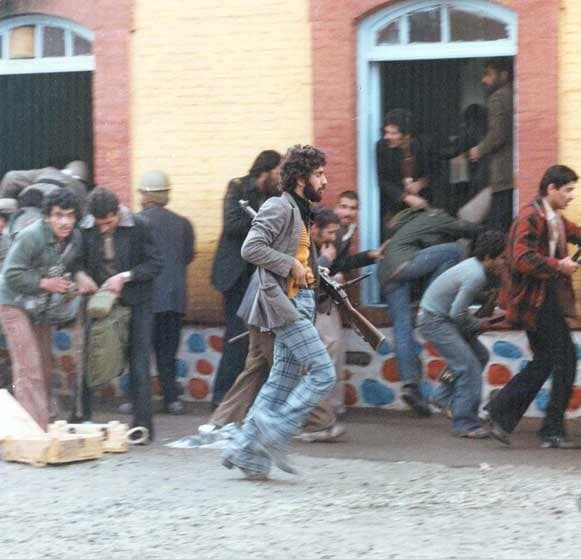
International Socialist Review
The Iranian Revolution. By Saman Sepehri (Issue 9, August-September 2000)
“Although the Iranian revolution of 1979 resulted in the installation of Ayatollah Khomeini and the Islamic Republic, it was the mobilization of the working class and the poor that brought the Shah’s regime to its knees.”
Iran at the crossroads. By Saman Sepehri (Issue 9, August-September 2000)
“Iran has never been the Islamic monolith portrayed by the West. There has been resistance and struggle in Iran throughout the period of the Islamic regime’s rule.”
Jacobin
The Iranian protests are the latest phase in a long cycle of popular unrest. By Afshin Matin-Asgan (December 1, 2022)
“To understand today’s protests in Iran, we need to look at the history of the Islamic Republic since 1979. Iran has a tradition of popular mobilization with few parallels in the modern world, and that tradition underpins the current wave of discontent.”
How Iran’s theocrats allied with — and then crushed — the Left. By Liza Featherstone (October 24, 2022)
“Sociologist Chahla Chafiq was a 25-year-old Marxist activist during the 1979 Iranian revolution. Now in exile in France, she looks back on the tensions between socialism, feminism, and anti-imperialism that have roiled Iran’s opposition politics for decades.”
Libcom.org
1978-1979: The Iranian Revolution. By Michael Schmidt (2006)
“A history and analysis of the revolution in which socialists aligned themselves with Islamists to overthrow the West-backed Shah. Following the success of the revolution, the Islamists instituted a theocratic dictatorship and wiped out the workers’ movement and the left.”
The working class in Iran: some background – class struggles from 1979-1989. By Mostafa Saber (1990)
“Excerts from Mostafa Saber’s A Brief Look at the Situation of the Working Class in Iran (London & Stockholm, 1990); a short description of workers’ history and conditions – and their struggles during and following the 1979 Revolution.”
Middle East Report
MERIP’s first decade of Iran coverage from political challenge to revolution. By Naghmeh Sohrabi (Issue 300, Fall 2021)
“MERIP’s coverage of Iran from the organization’s founding in 1971 up through the 1979 revolution and the early years of post-revolutionary state formation remain an invaluable resource for understanding and teaching the history of Iran’s long 1970s.” With links to many MERIP-articles.
Why the Islamic Republic has survived. By Ervand Abrahamian (Issue 250, Spring 2009)
“For 30 years, populism has managed to blunt the sharp edge of class politics. It may not do so in the future.”
The revolution’s first decade. By Fred Halliday (Middle East Report, Issue 156, January-February 1989)
“If the revolution itself was a surprise, destroying an apparently strong and capable regime and bringing a most unexpected clerical leadership to power, its subsequent course has also contained quite a few unanticipated elements.”
MR Online
The excess of the left in Iran. By Nathan Coombs (27.6.2010). Review of Maziar Behrooz, Rebels with a Cause: The Failure of the Left in Iran (I.B. Tauris, 2000)
“Under the influence of Third-Worldist revolutionary theory and later postmodern identity politics, they ceded their moral mission to the Islamists.”
New Left Review
The Iranian Revolution and its implications (Issue 166, November-December 1987, p.29-37). Interview with Fred Halliday. Only first paragraph online. See the full article at Platypus1917.org (pdf).
“In late 1978, just prior to the fall of the Pahlavi regime, you published your book Iran: Dictatorship and Development. Much has happened since then to challenge and modify your analysis. How would you assess subsequent political and economic developments in Iran?” See also Fred Halliday: The Iranian Revolution: Uneven development and religious populism (pdf). Chapter 3 in Fred Halliday and Hamza Alavi (eds.): State and Ideology in the Middle East and Pakistan (Macmillan, 1988, p.31-63).
New Internationalist
Theme: Inside Iran (No.398, March 2007)
“This issue has been conceived from the start as one that would give Iranians the chance to communicate directly with our mainly Western readership.” See also: Iran: The facts.
New Politics
Iran: secular revolt against clerical tyranny. By Saeed Rahnema (“Background and prospects for the Iranian protests.”
Revisiting Foucault and the Iranian Revolution: The seductions of Islamism. By Janet Afary and Kevin B. Anderson (Vol.10, No.1, Whole No.37, Summer 2004)
“Progressive and leftist intellectuals around the world were initially very divided in their assessments of the Iranian Revolution. While they supported the overthrow of the shah, they were usually less enthusiastic about the notion of an Islamic republic. Foucault visited and wrote on Iran during this period, a period when he was at the height of his intellectual powers.”
News and Letters
What has happened to the Iranian revolution? (1981). By Raya Dunayevskaya (April-May 2009; online at Marxists Internet Archive)
“Has it already run its course into its opposite, counter-revolution? Or can it be saved and deepened?”
Permanent Revolution
1979: Iran – Revolution and counter revolution (4 September 2006)
“The aspirations of the millions who struggled successfully to overthrow the Pahlavi monarchy have been cruelly betrayed. These aspirations, not religious fanaticism, animated the huge mass movement that brought down the Shah.”
The Shoras and the Shah. By Mark Hoskisson (1987). Review of Assef Bayat’s book: Workers and Revolution in Iran (Zed Books, 1987)
“On the 30th anniversary of the Iranian revolution we republish this assessment of the revolutionary potential of the movement.”
Iranian Revolution
“This is a series of articles written by Permanent Revolution supporters during the Iranian revolution of 1978-81.”
Red Pepper
Red Shi’ism, Iran and the Islamist revolution. By Alastair Crooke (17 October 2009)
“From the Iranian revolution to the Palestinian struggle, it has often been Islamic ideas that have inspired resistance to imperialism. Here, Alastair Crooke argues that the left needs a more complex understanding of the thinking, critical forms of political Islam. Saeed Rahnema responds saying that Alistair Crooke’s understanding of the Iranian revolution and recent events is deeply flawed and Azar Majedi argues Alastair Crooke’s glorification of the Islamist movement is based on distortions and falsification.”
Women of the revolution (January-February 2009)
“Thirty years after the toppling of the Shah in Iran, Azar Sheibani looks at how Iranian women have defied the reign of misogynist terror.”
Socialist Register
The working class and the islamic state in Iran. By Haideh Moghissi and Saeed Rahnema (2001, p.197-218)
“In all the major political developments in twentieth-century Iran, from the constitutional revolution of 1906-11 and the nationalization of the oil industry in early 1950s to the political upheavals of early 1960s and the 1979 revolution, workers were major participants and demonstrated a high level of militancy. ”
One revolution or two? The Iranian Revolution and the Islamic Republic. By Val Moghadam (1989, p.74-101)
“In this essay I have tried to show the importance of distinguishing
between the Revolution and the regime. The first was a popular, populist,
political rupture; the second is proof positive that an anti-imperialist, nonaligned petty-bourgeoisie can be profoundly reactionary and wildly at odds with the socialist project.”
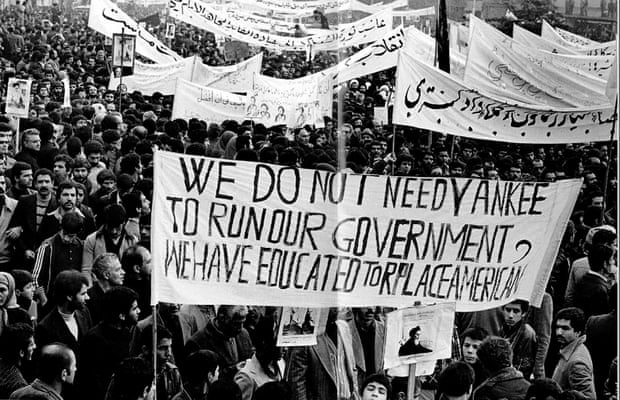
Socialist Review
Iran 1979: an opportunity squandered (Issue 443, February 2019)
“Forty years ago protests in Iran rolled over into a revolution. John Rose tells a tale of huge potential brutally suppressed.”
Iran: from Shah to Ayatollah (Issue 333, February 2009)
“With the failure of the ‘war on terror’ has come an emboldened, increasingly influential Iran. But as world leaders look for ways to exert their authority on the country, Naz Massoumi looks at Iran’s revolutionary history and its repeated rejection of imperialism.”
Socialist Worker (UK)
Iran’s revolution. By Viv Smith (Issue 2240, 26 February 2011)
“Iranian workers could have taken power when they overthrew their hated ruler, the Shah, in 1979 – but failings of the left helped to hand power to other forces.”
Iran’s 1979 revolution (Issue 2135, 24 January 2009)
“Thirty years ago Iran’s revolt struck a blow against US imperialism and showed the power of workers in the Middle East, writes Simon Basketter.”
Weekly Worker
The Imam, the strikers and the black, black oil (Issue 1359, 5 August 2021)
“There are rich lessons for today in the experiences of the oil strikes of 1978. In the first of two articles Peyman Jafari charts the incredibly difficult struggle for organisation, hegemony and strategy.”
See Part 2: Centrality of class independence (Issue 1360, 12 August 2021). “Khomeini and the clergy completely outmanoeuvred the left. But it need not have been that way.”
Preparing for revolution (Issue 1333, 4 February 2021)
“Yassamine Mather says that the Siahkal incident 50 years ago marked a break with the passivity of ‘official communism’, but the guerrillaist left was hopelessly outmanoeuvred when it came to the reality of revolution in Iran.” See also interview with Mohamad Reza Shalgouni about the role of the left after the revolution: Limits of guerrillaism (Ibid.) + interview with Ardeshir Mehrdad: From symbol to failure (Issue 1334, 11 February 2021) + Yassamine Mather about the internal struggles within the Fedai: Principle, confusion and hope (Issue 1334, 11 February 2021).
Legacy of failure (Issue 1287, February 23, 2020)
“Yassamine Mather shows that the passivity of Tudeh in the 1960s and 70s led to the rise of guerrillarist adventurism. Paradoxically, under the pressure of the Iran-Iraq war there was a convergence between the two currents. The Islamic Republic was supposed to be moving towards the ‘socialist’ camp.” See also part 1: Stalin’s ‘united front’ party (Issue 1286, February 13, 2020).
Forty years of inequality. By Yassamine Mather (Issue 1235, February 14, 2019)
“… nothing is left of the egalitarian slogans of the February uprising. Today most young Iranians laugh at their rulers’ claims of pursuing ‘social justice’ and, just as in February 1979, Iranians live in two parallel universes.”
Political legacy of hostage crisis. By Yassamine Mather (Issue 1008, May 1, 2014)
“The 1979 seizure of the US embassy in Tehran had nothing to do with ‘anti-imperialism’.”
Rewriting history (Issue 759, March 5, 2009)
“Official communists and some leftists supported the reactionary Khomeini regime. Homayoun Azad examines the division in Iran’s left three decades ago.”
Pilot becomes hijacker (Issue 758, February 26, 2009)
“Torab Saleth, a participant in the 1979 Iranian revolution, charts how ayatollah Khomeini rose from obscurity to lead the anti-shah mass movement and come to power in a counterrevolution.”
Islamic revolution or counterrevolution (Issue 756, February 12, 2009)
“On the 30th anniversary of the Iranian revolution, Torab Saleth examines its historical roots.”
Oil workers in the Iranian revolution (Issue 748, December 4, 2008)
“The oil workers’ strike of 1978 and early 1979 played a crucial part in the overthrow of the shah’s regime in Iran. On the 30th anniversary of the strike we publish a translation of an interview with Ali Pichgah, one of the founding members of the oil workers’ shora (council) …”
Workers Liberty
Revolution and counter-revolution 1978-9 (pdf) (Vol.3, No.5, June 2006, 8 p.)
“The Iranian revolution 1978-79 was one of the seminal events of the twentieth century, rich in lessons for working-class socialist … Yet this movement was smashed by the theocracy that took the place of the monarchy. In a three part article Paul Hampton tells the story.”
Islamism and the left in the Iranian revolution. By Mehdi Kia (Vol.2, No.2, March 2002)
“In 1979 Iran saw millions on the streets, and a general strike, in the overthrow of the huge, despotic military and police apparatus of the Shah (king), the USA’s strongest ally in the region. It was a great anti-imperialist revolution. Or… was it a counter-revolution?”
World Socialist Web Site
The tragedy of the Iranian revolution. By Keith Jones (11 February 2009)
“The tragedy of the Iranian revolution that toppled the Shah’s dictatorship 30 years ago is that the working class proved incapable of assuming a political role commensurate with its social weight in the struggle. For this, Stalinism is responsible.”
Se også:
How Britain helped Iran’s Islamic regime destroy the left-wing opposition. By Mark Curtis and Phil Miller (Declassified UK, 21 January 2020. “Britain supported Iran’s new Islamic regime in crushing the last remaining opposition to its rule in 1983 while the UK’s leading official in the country joked about Iran’s torture techniques, declassified files reveal.”
Iran’s past and present (Jacobin: Reason in Revolt, 20 April 2017). Interview with Ervand Abrahamian: “Why has the history of Iran’s left been erased?”


